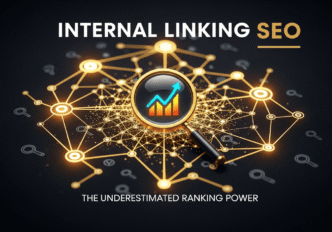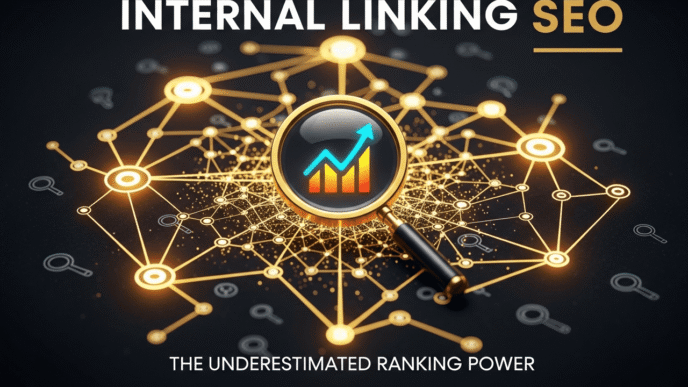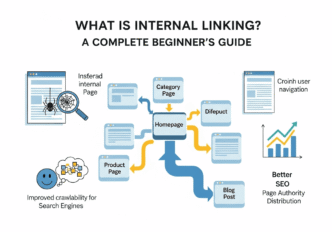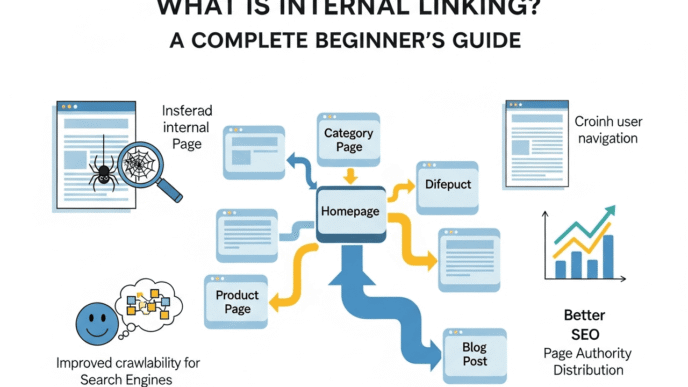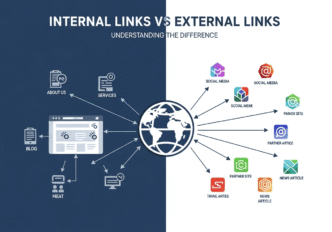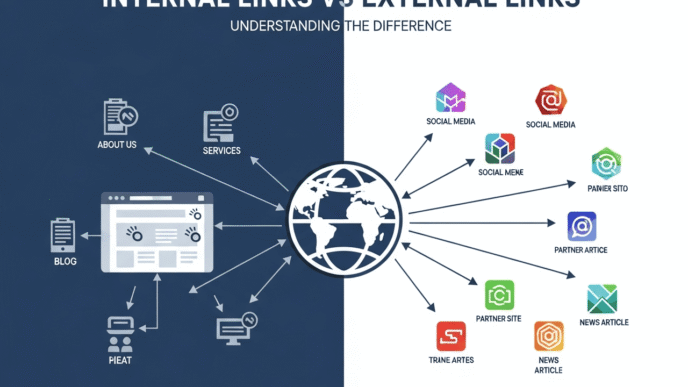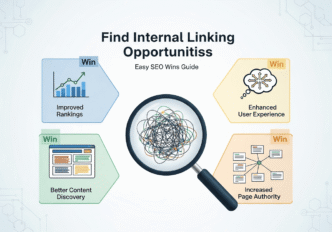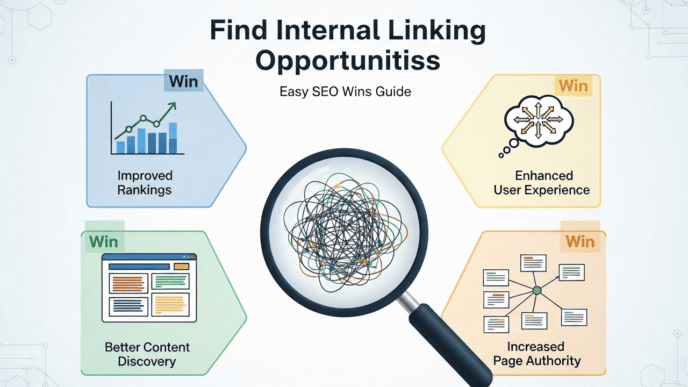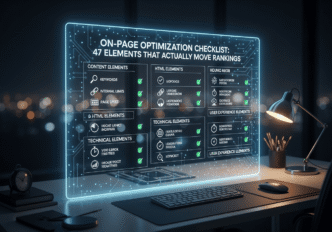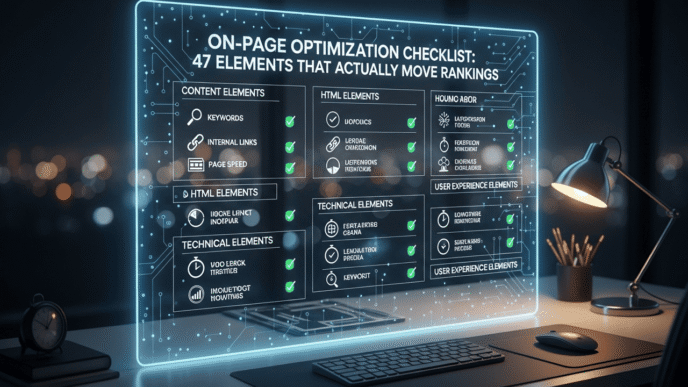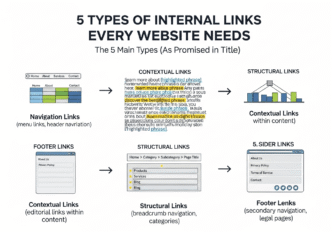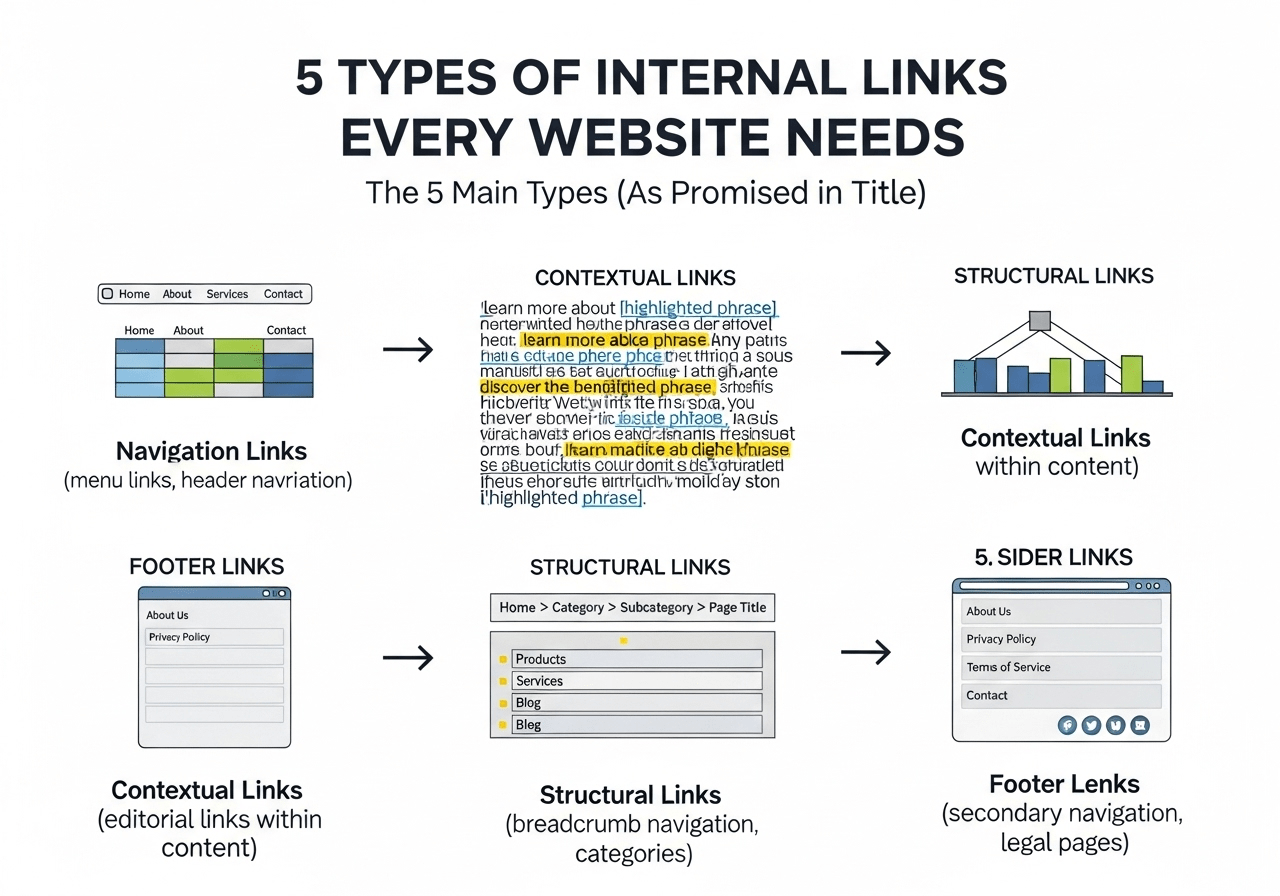Your website has 3 seconds. That’s it. In those crucial moments, users decide whether to stay or bounce faster than you can say “loading…” If your page speed optimization isn’t up to par, you’re hemorrhaging visitors, conversions, and revenue without even knowing it.
Here’s the kicker: Google is watching those 3 seconds too. Website speed isn’t just about user experience anymore – it’s a direct ranking factor that can make or break your SEO success. Slow sites don’t just frustrate users; they get buried in search results.
But here’s the good news: page speed optimization is one of the few SEO tactics that delivers immediate, measurable results. Fix your speed today, see improvements tomorrow. No waiting months for content to rank or links to build authority.
Ready to transform your sluggish site into a speed demon? Let’s dive into the complete guide to making your website blazingly fast.
Table of Contents
Toggle
What Is Page Speed Optimization and Why Does It Matter?
Page speed optimization is the process of improving how quickly your web pages load and become interactive for users. It’s not just about the initial page load time – it’s about the entire user experience from click to fully functional page.
Think of it like this: if your website were a restaurant, page speed would be how quickly customers get seated, receive menus, place orders, and get their food. Slow service = empty restaurant.
Google measures site performance through Core Web Vitals, which focus on loading speed, interactivity, and visual stability. These metrics directly impact your search rankings and user satisfaction.
Why Is Website Speed So Critical for SEO Success?
Loading speed isn’t just a nice-to-have feature – it’s a make-or-break factor for modern websites. Google has been crystal clear: fast sites get preferential treatment in search results.
The stats are brutal. A 1-second delay in page load time leads to 7% fewer conversions, 11% fewer page views, and 16% decrease in customer satisfaction. For an e-commerce site making $100,000 per day, that 1-second delay costs $2.5 million annually.
Search engines prioritize fast sites because they understand user behavior. If your site is slow, users leave. High bounce rates signal to Google that your content isn’t satisfying search intent, regardless of how good it actually is.
Pro Tip: “Site speed is like a multiplier for all your other SEO efforts. You can have the best content and strongest backlinks, but if your site is slow, everything else performs at 50% capacity.” – Google Core Web Vitals Team
What Are Core Web Vitals and How Do They Affect Speed?
Core Web Vitals are Google’s official metrics for measuring real-world user experience. They’re the foundation of modern speed optimization and directly impact your search rankings.
The Three Critical Metrics:
Largest Contentful Paint (LCP): Measures how quickly your main content loads. Target: under 2.5 seconds.
Interaction to Next Paint (INP): Measures how responsive your page is to user interactions. Target: under 200 milliseconds.
Cumulative Layout Shift (CLS): Measures visual stability – how much your page “jumps around” while loading. Target: under 0.1.
Only 33% of websites currently pass all three Core Web Vitals thresholds. That means mastering page speed optimization gives you an immediate competitive advantage over two-thirds of your competition.
How Can You Test Your Current Website Speed?
Before you can improve website speed, you need to know where you stand. Here are the essential tools for measuring page load time and identifying bottlenecks:
Free Speed Testing Tools
Google PageSpeed Insights: The gold standard for Core Web Vitals testing. Provides both lab data and real user data with specific optimization recommendations.
GTmetrix: Offers detailed waterfall charts showing exactly what’s slowing down your site. Excellent for identifying specific problem files.
WebPageTest: Advanced testing with options for different locations, devices, and connection speeds. Perfect for comprehensive analysis.
Premium Speed Analysis Tools
Pingdom Website Speed Test: User-friendly interface with historical monitoring and uptime tracking.
Google Lighthouse: Built into Chrome DevTools, provides comprehensive audits beyond just speed including SEO and accessibility.
These tools will give you baseline metrics and highlight the biggest opportunities for speed optimization improvements.
What Are the Most Common Speed Killers Destroying Your Site?
Identifying the culprits behind slow loading speed is half the battle. Here are the most common speed destroyers and how they impact site performance:
Oversized Images and Media
Unoptimized images are the #1 cause of slow websites. A single uncompressed photo can be larger than your entire HTML, CSS, and JavaScript combined.
The Problem: Raw photos from cameras are often 5-10MB each. Most websites need images under 100KB for optimal performance.
Real Example: A photography client’s homepage had a 15MB hero image. After optimization to 85KB (99.4% size reduction), page load time dropped from 12 seconds to 2.1 seconds.
Render-Blocking Resources
CSS and JavaScript files that prevent your page from displaying until they’re fully loaded create frustrating delays for users.
The Impact: Users see blank screens while resources load, leading to immediate bounces and poor user experience.
Server Response Time Issues
Your web hosting quality directly affects website speed. Cheap hosting often means shared servers with limited resources and slow response times.
Warning Signs: Server response times over 600ms indicate hosting problems that no amount of optimization can fully solve.
Which Page Speed Optimization Techniques Actually Work?
Let’s cut through the noise and focus on speed optimization strategies that deliver real results. These techniques are ranked by impact and ease of implementation:
Image Optimization (Biggest Impact)
Compress Images: Use tools like TinyPNG or ImageOptim to reduce file sizes by 60-80% without visible quality loss.
Choose the Right Format: WebP images are 25-35% smaller than JPEG with same quality. Use AVIF for even better compression on supported browsers.
Implement Lazy Loading: Only load images when users scroll to them. This can improve initial page load time by 20-50%.
Responsive Images: Serve different image sizes based on device screen size. No need to load desktop-sized images on mobile phones.
Code Optimization Strategies
Minify CSS, JavaScript, and HTML: Remove unnecessary spaces, comments, and characters. Can reduce file sizes by 10-15%.
Combine Files: Reduce HTTP requests by combining multiple CSS or JavaScript files into single files.
Use Critical CSS: Inline the CSS needed for above-the-fold content to eliminate render-blocking.
Caching and Delivery Optimization
Browser Caching: Store static resources locally so repeat visitors load pages instantly.
Content Delivery Network (CDN): Serve content from servers closest to your users. Can improve loading speed by 30-50% for global audiences.
Server-Side Caching: Generate static versions of dynamic pages to reduce server processing time.
How Do Different Tools Compare for Speed Optimization?
Choosing the right tools can make or break your page speed optimization efforts. Here’s a comprehensive comparison of the most effective solutions:
| Tool Category | Free Option | Premium Option | Best For | Speed Impact |
|---|---|---|---|---|
| Image Optimization | TinyPNG | ImageOptim Pro | Bulk compression | High (20-50%) |
| Caching | Browser caching | WP Rocket | WordPress sites | Very High (30-70%) |
| CDN | Cloudflare Free | Cloudflare Pro | Global audiences | High (25-40%) |
| Code Minification | HTML/CSS/JS Minifier | Autoptimize | Technical users | Medium (5-15%) |
| Performance Monitoring | Google PageSpeed | GTmetrix Pro | Ongoing optimization | N/A (tracking) |
| Hosting | Shared hosting | Managed hosting | High-traffic sites | Very High (40-80%) |
Recommended Starting Stack: Cloudflare (free CDN) + TinyPNG (image compression) + browser caching setup. This combination typically improves website speed by 40-60% with minimal technical knowledge required.
What Are the Best Speed Optimization Tools by Budget?
Free Tools (Budget: $0):
- Google PageSpeed Insights for testing
- TinyPNG for image compression
- Cloudflare for basic CDN
- Browser caching via .htaccess
Small Budget ($20-50/month):
- WP Rocket for WordPress caching
- Cloudflare Pro for advanced CDN
- ImageOptim for automated compression
- Basic managed hosting upgrade
Medium Budget ($100-300/month):
- Premium managed hosting (WP Engine, Kinsta)
- Advanced CDN with image optimization
- Professional performance monitoring
- Developer time for custom optimization
How Can You Optimize Core Web Vitals Specifically?
Core Web Vitals require targeted optimization strategies. Generic speed improvements don’t always translate to better vital scores.
Improving Largest Contentful Paint (LCP)
Target the LCP Element: Identify what’s causing your largest contentful paint (usually hero images or large text blocks).
Optimize Hero Images: Compress, use next-gen formats, and implement preloading for above-the-fold images. Recent data shows only 62.1% of websites pass LCP assessments as of 2024.
Improve Server Response Time: Upgrade hosting or implement better caching to reduce Time to First Byte (TTFB). Research from Deloitte and Google shows that even a 0.1-second improvement in page speed can transform the entire buyer journey.
Real Case Study: T-Mobile focused on user experience and Core Web Vitals optimization, resulting in a 20% reduction in site issues and a 60% increase in their visit-to-order rate.
Enhancing Interaction to Next Paint (INP)
Optimize JavaScript Execution: Break up long-running tasks and use web workers for heavy computations. INP replaced First Input Delay (FID) in March 2024 as a more comprehensive responsiveness metric.
Reduce Input Delay: Minimize third-party scripts and optimize event handlers. Nearly 600,000 websites went from passed to failed Core Web Vitals when INP officially replaced FID.
Implement Code Splitting: Load only necessary JavaScript for each page, reducing main thread blocking time.
Minimizing Cumulative Layout Shift (CLS)
Set Image Dimensions: Always specify width and height attributes to prevent layout shifts. 53% of users will abandon a site if it takes more than three seconds to load, and layout shifts compound this frustration.
Reserve Space for Ads: Use CSS to allocate space for advertising content before it loads.
Font Loading Optimization: Use font-display: swap and preload web fonts to prevent text shifting during font loading.
Expert Opinion: “CLS is often overlooked, but it’s crucial for user experience. I’ve seen sites lose 15% conversion rate just from layout shifts causing users to click wrong buttons.” – Web Performance Consultant
What Speed Optimization Mistakes Should You Avoid?
Even well-intentioned speed optimization efforts can backfire if you make these common mistakes:
Over-Optimization Pitfalls
Plugin Overload: Installing multiple caching plugins or optimization tools that conflict with each other.
Aggressive Image Compression: Reducing quality so much that images look pixelated or unprofessional.
Removing Important Functionality: Disabling features users actually need in pursuit of speed scores.
Testing and Implementation Errors
Testing Only Desktop: Mobile page load time is often 2-3x slower than desktop. Always test both.
Ignoring Real User Data: Focusing only on lab scores instead of field data from actual users.
Making Multiple Changes Simultaneously: Unable to identify which optimization actually helped when you change everything at once.
Technical Implementation Mistakes
Incorrect Caching Rules: Setting cache times too long or too short for different content types.
CDN Misconfiguration: Routing traffic through distant servers instead of closer ones.
Blocking Critical Resources: Accidentally deferring CSS or JavaScript needed for above-the-fold content.
How Long Does It Take to See Speed Optimization Results?
Page speed optimization delivers some of the fastest SEO results you’ll ever see. Here’s the realistic timeline for improvements:
Immediate Results (0-24 hours)
- Tool-based speed scores improve instantly
- User experience enhancements are noticeable immediately
- Bounce rate improvements often visible within hours
Short-term Results (1-4 weeks)
- Search ranking improvements for speed-sensitive queries
- Core Web Vitals scores update in Google Search Console
- Conversion rate improvements become statistically significant
Long-term Results (1-3 months)
- Full SEO benefits as Google’s algorithm recognizes improvements
- Compound effects of better user engagement signals
- Sustained conversion rate and revenue improvements
Success Story: A local restaurant’s website went from 8.2-second load time to 1.4 seconds after optimization. Within 2 weeks, they saw 34% more online reservations and moved from page 2 to position 3 for their main keyword.
What Tools Should You Use for Ongoing Speed Monitoring?
Speed optimization isn’t a one-time fix – it requires ongoing monitoring and maintenance. Here are the best tools for tracking website speed over time:
Free Monitoring Solutions
Google Search Console: Track Core Web Vitals for your entire site with real user data.
Google Analytics 4: Monitor page load times and user behavior correlation.
Uptime Robot: Basic uptime monitoring to catch server issues.
Premium Monitoring Platforms
GTmetrix: Automated daily/weekly speed tests with email alerts for performance degradation.
Pingdom: Comprehensive uptime and performance monitoring from multiple global locations.
New Relic: Enterprise-level application performance monitoring with detailed diagnostics.
Monitoring Best Practices
Set Up Alerts: Get notified immediately when page load time exceeds thresholds.
Track Key Pages: Monitor your most important pages (homepage, product pages, checkout) more frequently.
Regular Audits: Conduct monthly comprehensive speed audits to catch gradual performance degradation.
Ready to Supercharge Your Website Speed?
Page speed optimization isn’t just about making your site faster – it’s about creating a competitive advantage that impacts every aspect of your online success. From search rankings to user experience to conversion rates, speed touches everything.
The best part? Unlike most SEO strategies that take months to show results, speed optimization delivers immediate, measurable improvements. Fix your speed today, see better metrics tomorrow.
Your action plan for the next 48 hours:
- Test: Use Google PageSpeed Insights to benchmark your current website speed
- Prioritize: Focus on the highest-impact issues first (usually images and caching)
- Implement: Start with free optimizations before investing in premium tools
- Monitor: Set up tracking to measure improvements and catch future issues
What Are the Most Dangerous Speed Optimization Pitfalls to Avoid?
Even well-intentioned page speed optimization efforts can backfire spectacularly if you make these critical mistakes. Learning from others’ failures can save you months of frustration and lost revenue:
The Over-Optimization Trap
Plugin Overload Syndrome: Installing multiple caching plugins, image optimizers, and speed tools that conflict with each other. According to recent data, 40% of brands regress on web performance after six months due to conflicting optimizations.
Aggressive Compression Disasters: Reducing image quality so drastically that your brand looks unprofessional. A luxury watch retailer lost 28% of conversions after over-compressing product images to save 30KB per page.
Breaking Critical Functionality: Disabling important features like contact forms, checkout processes, or analytics tracking in pursuit of perfect speed scores.
Testing and Implementation Failures
Desktop-Only Testing Blindness: Only testing on high-end desktop connections while 63% of web traffic now comes from mobile devices. Mobile page load time is typically 2-3x slower than desktop.
Lab Data Obsession: Focusing solely on Google PageSpeed Insights scores instead of real user experience. Only 51.8% of websites achieve passing Core Web Vitals scores in real-world conditions.
Change Everything Syndrome: Making dozens of simultaneous optimizations without tracking which changes actually helped. When performance improves or degrades, you can’t identify the root cause.
Technical Implementation Disasters
CDN Misconfiguration Nightmares: Accidentally routing traffic through distant servers instead of nearby ones, making sites slower than before optimization.
Caching Rules Gone Wrong: Setting cache expiration times incorrectly, causing dynamic content to display outdated information or preventing updates from appearing.
Critical Resource Blocking: Deferring CSS or JavaScript files that are essential for above-the-fold content, creating broken layouts and poor user experience.
Warning: “I’ve seen businesses spend $50,000 on speed optimization only to break their checkout process and lose more revenue than they gained from improved performance. Always test critical user flows after every change.” – Web Performance Consultant
How Is AI Revolutionizing Page Speed Optimization in 2025?
Artificial Intelligence is transforming speed optimization from reactive fixes to predictive, automated enhancement. Here’s how AI is reshaping the page speed optimization landscape:
AI-Powered Predictive Loading
Smart Prerendering: AI analyzes user behavior patterns to predict which pages users will visit next, preloading them in the background. This creates instant navigation experiences and dramatically improves Core Web Vitals scores.
Intelligent Resource Prioritization: Machine learning algorithms determine which images, scripts, and content should load first based on user interaction patterns, reducing perceived loading speed by up to 40%.
Real-Time Adaptation: AI systems continuously adjust optimization strategies based on device type, connection speed, and user behavior, providing personalized performance experiences.
Automated Technical Optimization
Smart Image Optimization: AI automatically chooses the best image format (WebP, AVIF, JPEG) and compression level for each user’s device and connection speed, maintaining quality while maximizing website speed.
Dynamic Code Optimization: Machine learning algorithms identify and eliminate unused CSS and JavaScript in real-time, reducing file sizes by 30-50% without manual intervention.
Intelligent Caching: AI-powered caching systems predict content freshness needs and user demand patterns, optimizing cache strategies for maximum performance benefit.
AI Search Engine Impact on Speed Requirements
With 47% of marketers using AI SEO tools and AI Overviews appearing in growing numbers of search results, site performance requirements are evolving:
AI Crawler Optimization: Search engines’ AI systems prioritize fast-loading sites for inclusion in AI-generated summaries and answers. Poor page load time directly impacts AI search visibility.
User Experience Correlation: AI systems analyze user behavior signals like bounce rate and time on page, making speed optimization crucial for maintaining search visibility in AI-driven results.
Generative Engine Optimization (GEO): As platforms like ChatGPT and Perplexity gain popularity, optimizing for AI citation requires excellent technical performance to meet AI crawler expectations.
For detailed guidance on AI-driven optimization strategies, explore Google’s Core Web Vitals documentation and advanced AI optimization techniques.
AI Expert Insight: “By 2025, AI will handle 80% of routine speed optimizations automatically. The winning strategy isn’t fighting AI – it’s leveraging it to focus human expertise on strategic performance decisions that machines can’t make.” – AI Performance Optimization Lead
The difference between a 3-second site and a 1-second site isn’t just 2 seconds – it’s the difference between thriving and merely surviving online.
Final Pro Tip: Speed optimization is an investment, not an expense. Every second you shave off your loading speed compounds into more traffic, better rankings, and higher revenue. Start optimizing today – your future self will thank you.
Time to leave slow websites in the dust and join the speed revolution. Your users (and your bottom line) are waiting.
🚀 Page Speed Optimization Flowchart
Interactive guide to lightning-fast website performance
- Prepare testing environment
- Gather current performance data
- Set optimization goals
- Check Google Search Console
- Review recent speed test results
- Assess Core Web Vitals status
- Google PageSpeed Insights
- GTmetrix Analysis
- Core Web Vitals Check
- WebPageTest.org
- LCP (should be < 2.5s)
- INP (should be < 200ms)
- CLS (should be < 0.1)
- Overall performance score
- ✅ All Good: Ready for monitoring
- ⚠️ Needs Improvement: Targeted fixes
- 🚨 Poor: Critical optimization needed
- 🖼️ Image optimization needed
- ⚡ Loading speed improvements
- 📱 Mobile performance issues
- 🔧 Technical fixes required
- Compress images (60-80% size reduction)
- Convert to WebP/AVIF formats
- Implement lazy loading
- Set proper image dimensions
- Use responsive images
- Enable browser caching
- Minify CSS, JavaScript, HTML
- Implement CDN
- Optimize server response
- Remove unused code
- Re-run performance tests
- Compare before/after metrics
- Check all Core Web Vitals
- Test on multiple devices
- Significant improvement: Move to monitoring
- Minimal improvement: Try AI tools
- No improvement: Advanced optimization
- Predictive page preloading
- Smart caching algorithms
- Automated image optimization
- Intelligent resource prioritization
- Google Search Console alerts
- Monthly Core Web Vitals review
- Performance degradation alerts
- User experience tracking
- Regular performance audits
- Content update optimization
- New feature testing
- Competitive analysis
- Search rankings improvement
- Conversion rate increases
- User satisfaction scores
- AI search visibility
- Revenue impact
- Lightning-fast user experience
- Improved search rankings
- Higher conversion rates
- Better Core Web Vitals scores
- Competitive advantage achieved
Powered by SEOProJournal.com
Your trusted source for SEO insights, guides, and optimization tools
Visit SEOProJournal.com for more expert SEO content and resources




